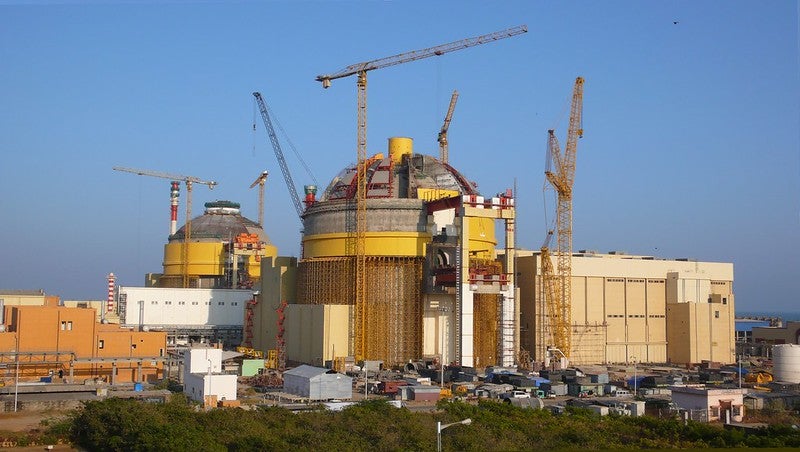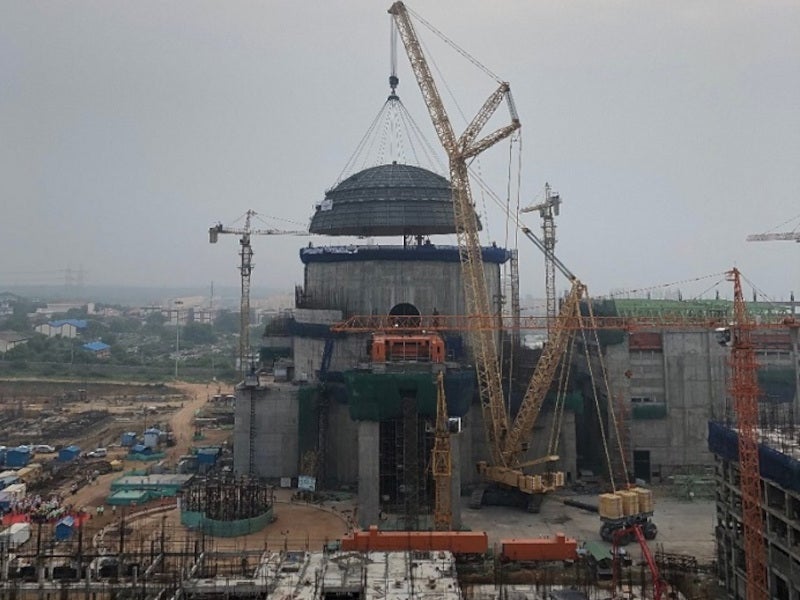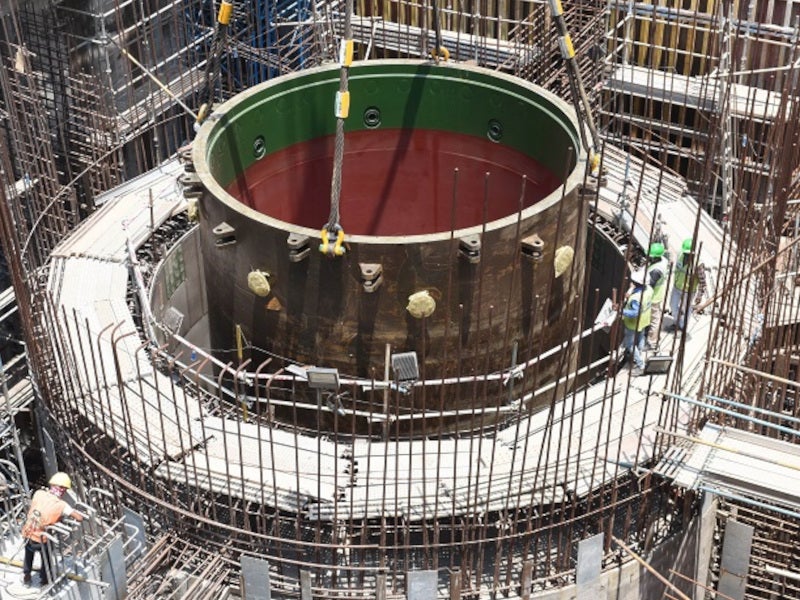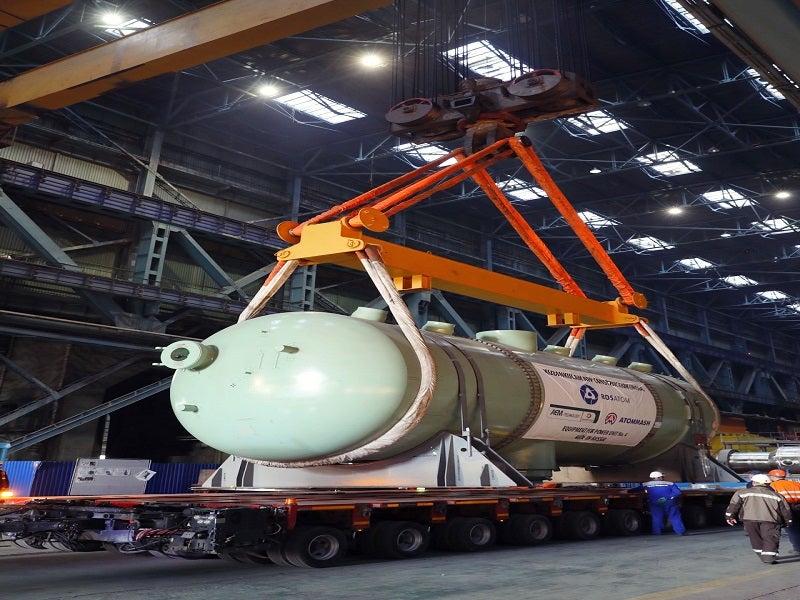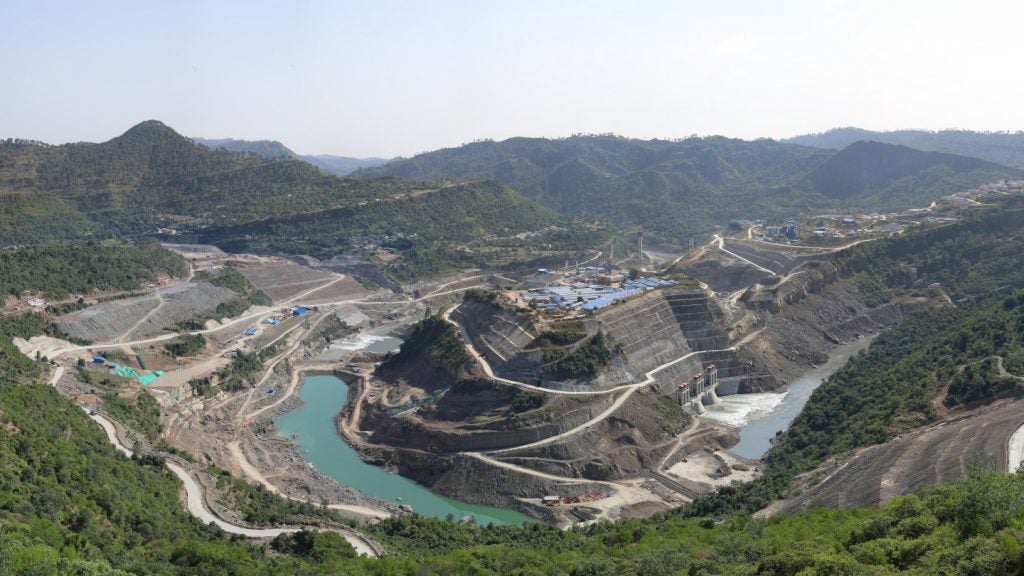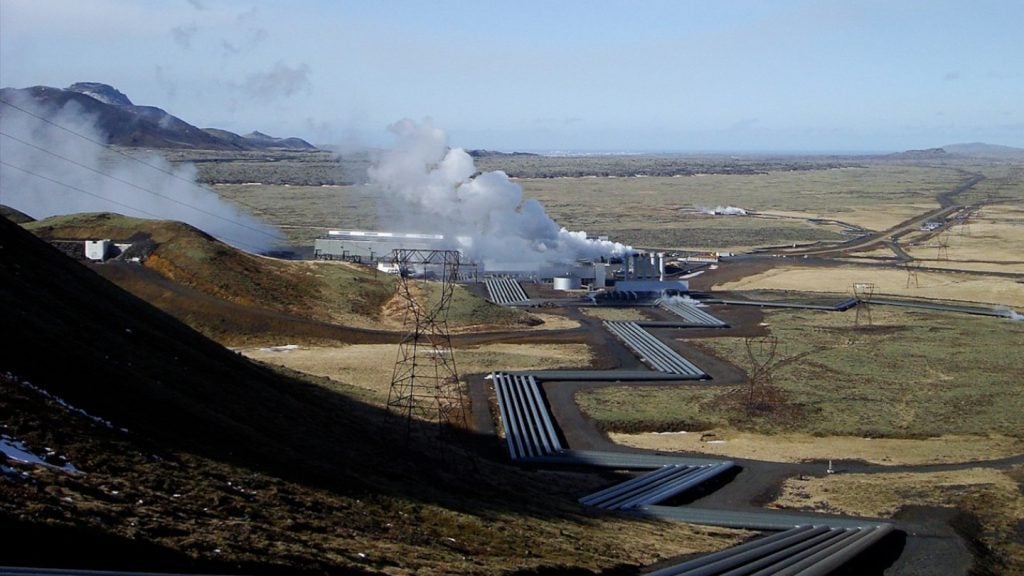The Kudankulam Nuclear Power Plant (KNPP), which will be the biggest nuclear power station in India, is located 650km south of Chennai, in the Tirunelveli district of Tamil Nadu. It is being developed by the Nuclear Power Corporation of India (NPCIL).
Two 1,000 megawatt (MW) pressurised water reactor (PWR) units based on Russian technology were constructed in phase one of the project. An additional four units are under construction in the second and third phases of the project.
The construction of units three and four started in 2017, with the aim of making them operational by 2023.
NPCIL and the ASE Group of companies signed the general framework agreement for the construction of the fifth and sixth units in June 2017. Construction works for the last two units started in 2021.
Upon commissioning of its six units, by 2027, the power plant will have a combined capacity of 6,000MW.
Kudankulam nuclear power plant details
NPCIL and Rosatom finalised the reactor design and engineering supervision arrangements for the construction of KNPP’s phase one in 1998, which cost Rs140bn ($2.47bn). The total cost of the project for the six units is Rs1.11tn ($16.3bn).
Construction of phase one started in 2001, and the first two units were commissioned in 2013 and 2016, respectively.
The project experienced significant delays because of persistent protests by locals and nuclear activists over safety concerns.
The two operating units received the first batches of TVS-2M nuclear fuel from the TVEL Fuel Company of Rosatom in June 2022.
Kudankulam nuclear power plant has a production life of 60 years, which can be extended by another 20. The first unit of the plant supplies power at a cheaper rate of about Rs3.89 per unit.
The power plant’s home state of Tamil Nadu is allocated 50% (925MW) of the power generated, while neighbouring states share 35% of the residual power, including 442MW for Karnataka, 266MW for Kerala and 67MW for Puducherry. The final 15% of the generated power is unallocated and will be added to a central pool.
Kudankulam nuclear power project phases two and three
The ground-breaking for the construction of units three and four was held in February 2016, while the concrete pouring ceremony for the third unit was held in June 2017.
The reactor vessel of unit three was installed in April 2022, followed by the start of welding of the main coolant pipeline (MCP) in December 2022.
A core catcher, weighing more than 160 tons (t), was placed under the reactor pit of unit four in April 2021.
Units three and four are expected to be commissioned in 2023 and 2024, respectively.
Construction works for phase three of the power plant’s development started with concrete pouring for units five and six in June and December 2021, respectively.
KNPP reactor
Kudankulam, or Koodankulam, is India’s first nuclear plant to use imported PWR technology. The existing nuclear power plants in India use pressurised heavy water reactor or boiling water reactor technology.
KNPP uses the advanced version of the Russian-developed PWR nuclear technology, VVER-1000 type reactors, also known as water-water power reactors.
VVER technology has completed more than 1,500 reactor years of operating time.
KNPP uses AES-92, also called the V-466 model, which is the latest version of the third-generation VVER-1000. This integrates active and passive safety measures, including passive heat removal system (PHRS), hydrogen re-combiners, core catchers, hydro accumulators, and quick boron injection system (QBIS). These multi-layered features ensure the plant and environment are safe.
Safety features
The AES-92 includes a combination of active and passive safety solutions. It retains the traditional active safety provisions, such as the use of neutron-absorbing control rods, to control the reactivity.
The passive safety relies on natural factors, such as pressure differentials, gravity or natural convection, to ensure protection against malfunctions during emergency situations.
This includes the fast injection of high-pressure boron and provision of extra tanks for long-term supply of borated water to the reactor in a passive way, as well as a system for inter-containment area passive filtration.
The reactor building has a series of passive hydrogen re-combiners to convert abnormal production of hydrogen into water. This also includes a system for containing the molten core of the reactor during severe accidents.
AES-92 has a double protective containment, with the inner envelope made of steel and the outer one made of heavy reinforced concrete steel. This prevents radioactive release into the environment during possible disasters, including earthquakes, tornadoes or aircraft crashes. The inner containment is also equipped with a water sprayer system to ease the steam pressure in the reactor.
Kudankulam nuclear power plant construction and protests
Concrete work for units one and two started in March and July 2002, respectively. NPCIL started commercial operations of unit one from midnight of 31 December 2014, while unit two was synchronised with the southern grid in August 2016.
Construction works on-site were stopped due to protests in October 2011. However, they resumed in March 2012 with the permission of the Tamil Nadu Government.
In May 2013, the Indian Supreme Court dismissed the petitions by nuclear activists questioning the safety of the nuclear power plant and granted approval for the commissioning of the first two units.
The Atomic Energy Regulatory Board (AERB), NPCIL and Department of Atomic Energy of India were asked by the court to ensure the safety of the plant and give final clearances before the start of commercial operations.
Controversy regarding KNPP
Kudankulam nuclear power plant was a controversial project since its inception, with protests by local residents and various activist groups over potential radiation threats and issues related to nuclear waste disposal.
The anti-Kudankulam campaign intensified after the Fukushima nuclear incident in Japan in 2011.
KNPP is allegedly located in a tsunami-prone area, and more than one million people residing within a 30km radius of the nuclear power plant cannot be evacuated safely in the occurrence of any nuclear disaster
The People’s Movement Against Nuclear Energy (PMANE) is at the forefront of the anti-Kudankulam campaign.
The identification of four faulty crucial valves in reactors at Kudankulam and the arrest of Russian officials for sourcing substandard materials for nuclear equipment further fuelled opposition to the plant.
Contractors involved in Kudankulam nuclear power plant development
The subsidiary of the Russian State Nuclear Energy Corporation Rosatom, Atomstroyexport, is responsible for the technical design, construction supervision and technical support for reactor commissioning, as well as training for operation and maintenance, and the supply of equipment and materials
Bharat Heavy Electricals configures the machines at the plant, and NPCIL undertakes the construction, erection and commissioning.
HCC India was involved in the construction of units one and two.
Larsen & Toubro is responsible for the main plant civil works of units three, four, five and six.
Dextra supplied 350,000 Bartec couplers for the construction of units three and four.
The Volgodonsk branch of AEM-Technologies, the machine-building division of Rosatom, started manufacturing the bends of the main circulation pumps for units five and six in May 2021.
Tiazhmash manufactured the reactor pressure vessel dry shielding for unit three.
LUCH Scientific Production Association signed an agreement to provide thermocouples for the four new power units of the KNPP in july 2022.

